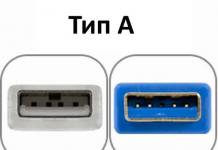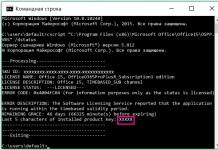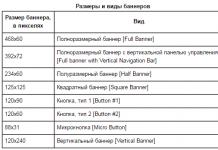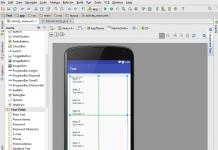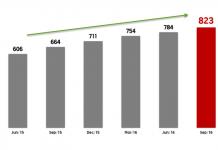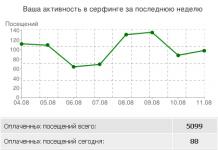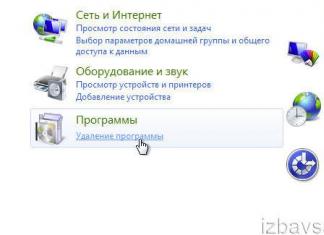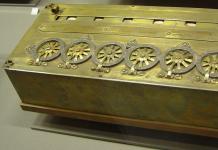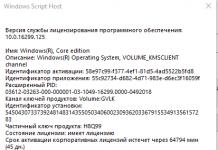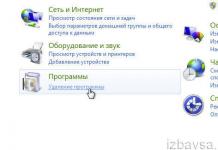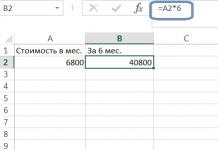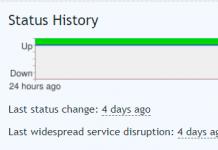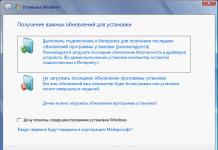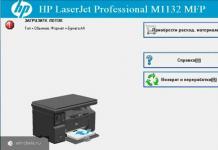Many users are looking to improve the functionality of Explorer, and much more. This can be done through the folder settings settings. In this material we will consider, how to open folder properties in Windows 7, 8, as well as enabling these options, and what parameters are worth paying attention to.
Where to find folder properties in Windows 7, 8
There are several ways to open folder properties. Consider them and choose the best one:
2. The method is to use search. Click the Start button, enter “folder options” in the search form and select the first item found.

In figure eight on the desktop you can press (key with Logo) + W to call up the curtain with search. Select "options" to trim off any unnecessary stuff, type "folder options" and press Enter.

3. In Windows 7 Explorer, click “organize”, then select “folder and search options” (on the left). There is an alternative way to open folder properties, click Alt to show the hidden menu, click "tools" and select "folder options" (right).

4. In Windows 8 Explorer, visit the “View” tab. Then click the "options" button.

After using one of the methods, you will see the Windows 7, 8 folder properties window, containing the tabs: “general”, “view” and “search”. In different versions of the OS, the window looks almost identical, but with 8 options there are a little more.

Description of useful parameters
The “general” tab (picture above) displays a limited set of configurations. Here you can set the folder to open in the same or separate window. You can choose to open files and folders with one or double click.
The View tab contains many options. The user decides which options to use individually. I recommend paying special attention to the following folder properties settings:
- Always show icons rather than thumbnails– this option is useful when you work with large volumes of files and folders. If your computer loads thumbnails slowly, enable this option.
- Hide empty drives in a folder– if you insert an empty flash drive or other removable disk, it will not appear in Explorer, which can cause confusion. It is strongly recommended that you uncheck this option.
- Hide extensions for registered file types– disabling this property shows file extensions. It will help distinguish normal files from virus ones. There is malware that specifies two extensions, for example filename.doc.exe. If the parameter is enabled, you will only see file_name.doc and treat it as a regular text file. Uncheck this option.
- Use checkboxes to select items– allows you to mark elements with the mouse. The setting is equivalent to holding Ctrl and then clicking the mouse button on the selected elements. The property is useful when you need it for subsequent actions.
- Hidden Files and Folders – Contains two options that show or hide items with matching attributes.

The “search” tab contains options for searching for files and folders. The default configuration works very well. If you are not satisfied, then experiment with the available options to improve the result.

Don't forget after making any changes to the folder properties, click OK to save.
How to enable folder properties
Sometimes there is a situation that folder parameters on Windows 7, 8 cannot be opened using the methods listed above. This is due to the fact that the virus blocked the ability to open, or the administrator restricted your access to this component.
To fix the problem, check your computer with an antivirus program. Gain administrative access and perform the following enable methods:
1. Press Win + R, copy gpedit.msc and click Enter (does not work in all editions of Windows). In the Group Policy Editor window, go to “User Configuration”, then to “Administrative Templates”, then to the “Windows Components” section, and to the “Windows Explorer” subsection.
On the right side, find the item responsible for folder parameters (shown in the image), double-click on it with the left button. In the new window, select “disable” or “not configured” and click OK. Folder properties in Windows 7, 8 will again become available in Explorer.


Those who do not want to change the registry can download ready-made reg files. The archive contains 2 files Vkluch.reg (enables) and Otkl.reg (disables). Extract and run Vkluch.reg to enable folder properties in Windows 7, 8, click “yes” everywhere. Restart your PC for the changes to take effect.
Now you know what they are folder properties in Windows 7, 8, how to open them and enable them in the event of a virus attack. Experiment with configuration options and find the one that works best.
Files and folders are the main means of presenting and organizing information in Windows. How effectively the user can work with data depends on the methods and parameters for displaying files and folders. To set the properties of files and folders, you must do one of the following:
- select a team Start>Control Panel, click on menu Service and select a team ;
- select a team Tools>Folder Options in any Explorer window or in a folder window My Documents, My computer, My drawings.
Window contains four tabs, which are discussed below.
General Tab
Tab Are common allows you to configure such parameters.
- By switch Tasks You can configure the folder display mode. In particular, if you set it to position Display a list of common tasks in folders, then various tabs with links to system programs, utilities and other Windows folders will be displayed on the left side of the window. In the standard folder display mode, there is no panel on the left side of the window.
- Switch Browse folders allows you to set the mode for opening a new folder. If you set it to position Open folders in the same window, then the new folder will open in the same window as the previous one. In this case, you can use the buttons to switch between folders Forward And Back, located on the toolbar of the folder window. To open a new folder in a separate window, set the switch to Open each folder in a separate window.
- Switch Mouse clicks is designed to select the mode for selecting and opening folders, files and shortcuts. When installed in position Open with one click, highlight with pointer the icon will be highlighted when you hover the mouse over it, and you will need to left-click to launch the icon. In this case, icon labels can also be highlighted both initially and when hovering over the icon with the mouse pointer.
- Click the button Restore to default to return the previous folder display options.
View Tab
In field Folder view of this tab there are two buttons Apply to all folders And Reset for all folders. Button Apply to all folders only available if the window was opened using the Tools>Properties command in a folder window. In this case, click on the button Apply to all folders will cause the settings for the custom folder to be used for all folders on the computer. Click the button Reset for all folders to restore Windows default folder display settings.
In field Extra options By checking the appropriate boxes and selecting the position of the switches, you can configure individual display options for folders, files, and shortcuts. At the same time, a detailed description is provided for each checkbox. To ensure a more comfortable experience, it is recommended to configure the following settings.
- Check the box Show descriptions for folders and desktop items.
- Check the box Show file size information in folder suggestions.
- Uncheck Display the contents of system folders.
- Select radio button Don't show hidden files and folders.
Hiding system files and folders is necessary to prevent a crooked user from accidentally or intentionally deleting or changing any of the system files, which could lead to the failure of the operating system.
File Types Tab
Using the File Types tab, you can see what file types are registered with Windows and what applications they are associated with.

At the top of the tab in the field file extensions registered in the system are listed. When a file type is registered in the system registry, data is recorded about which application will open files with that extension (for example, files with the .mp3 extension are opened by Windows Media Player by default).
The bottom part of the window provides brief background information about the file type currently selected in the field Registered file types. To register a new file type in the system, use the button Create. After clicking this button, a window will appear Creating a new extension. In field Expanding this window you should enter the extension of the new file type.
Button Change is designed to change the program that opens the file specified in the field Registered file types. When you click this button, a window will appear on the screen Program selection, in which you should select the required application. If the program you need is not in the list, click the button Review and in the window that opens, specify the path to the required program. Button Additionally will be needed to configure additional parameters for the file type currently selected in the field Registered file types.
Changing the applications associated with different file types can be quite useful. For example, many users do not like the capabilities of the Windows Media Player program, which by default launches any video and audio files. When you install a new program for watching videos (such as BSPlayer) or listening to audio files (such as Winamp), you can specify that from now on all such files will be opened by the program you install. Most programs will automatically re-register the file extensions associated with them during installation. For example, after installing the ACDSee program, all graphic files will be opened by this program by default. And, as already mentioned, extension registration can be changed manually.
After the majority of users switched from Windows XP to Windows 7, many questions and pitfalls arose. A fairly common question is regarding hidden files in Windows 7. “Users” are accustomed to solving this problem through “Folder Options,” displaying “invisible” data. But how to implement this in Windows 7? This menu, thanks to which it was possible to resolve the issues that arose, is not available in the “seven”. Let's take a closer look at opening the "Folder Options" menu in the Windows 7 operating system, as well as its main functions.
How to show hidden files?

In order to find system components that are protected by default by the system, you should uncheck the “Hide protected system files. Attentively! It is not recommended for novice users to perform the last operation unless absolutely necessary.
Useful options
Folder properties (which, thanks to Silicon Valley developers, are now called settings) display basic configurations that allow you to set folders to open in one or more windows. Also here you can choose exactly how to open files - with a single or double click.
The “View” tab contains many important parameters and settings. The user determines which options to choose independently. Experts recommend paying attention to the following folder properties settings:

“Search” is a tab containing options to search for folders and files. 
After entering the necessary parameters, save by clicking “OK”.
There are situations when viruses (and maybe even the administrator) block the opening of folder parameters. To solve this problem, you should use one of the antivirus utilities.
- In the Run window, enter gpedit.msc and go to User Configuration - Administrative Templates - Windows Components - Windows Explorer.
- Find the item (shown in the figure below) and double-click to disable it, after which the folder properties in the Windows operating system should be available.

The structure of the folder window was examined. Now I propose to look from the point of view of computer literacy, what is inside the folder and what settings can be made there.
The work area of the Windows XP folder window contains object icons. When their composition is different, different modes of presenting information in the window are convenient.
Folder View: Thumbnails, Tile, Icons, List, Table
In the top menu of the “View” window, you can check the box next to “Page Thumbnails” “.
View folder menu
Thumbnail mode allows you to view graphic files without opening them. A thumbnail appears instead of an icon and shows a smaller version of the image from the file.
Thumbnail view also changes the presentation of folders. If a folder contains graphic files, the pictures are displayed on the folder icon. On it you can see up to four images corresponding to the latest graphic files by creation date:
Tile mode– the most visual presentation mode, selected by the View – Tile command. It is used when there are few icons, and the type of icon and the caption under it are equally important. Additional information about the item, such as file size, appears next to the icon.
Icons mode activated by the command View – Icons. In terms of clarity, it is close to the tile mode. Objects are presented more compactly, so icons are convenient in small windows.
List mode enabled by the View – List command. It is the most compact, the size of the icons is minimal and objects are distinguished by their signatures. I usually prefer this mode because of its compactness of information placement.
Table mode(View - Table) is the most informative. The table contains several columns with detailed information about each object. For example, files typically display their type, size, and last modified date.
How to organize icons in a folder
It's easier to find and use the icon you need if the icons in the folder are organized. You can set different sorting conditions using the View – Arrange icons.
You can sort or arrange icons based on the following criteria:
- Name (that is, in alphabetical order of signatures),
- Size (i.e. in ascending order of file size),
- Type (i.e. identical icons are located next to each other),
- Modified (i.e. by creation date).
Computer literacy exercises:
1) Open the My Computer or My Documents folder. See how the working area of a folder window changes if you use different modes in the View menu, namely: Thumbnails, Tile, Icons, List, Table. Which mode did you like best?
2) In a folder, for example, “My Documents”, use the menu “View” - “Arrange Icons” to see how the contents of the folder are sorted depending on the click on the options: “Name”, “Size”, “Type”, “Changed” "
Changing folder properties allows you to customize their appearance, search, display of hidden and system elements, display of file extensions, and much more. But in order to make these adjustments, you must first go to the folder options window. Let's see how you can accomplish this task in Windows 7.
Although we often use the more familiar term “Folder Options,” inherited from Windows XP, in Windows 7 this setting is more correctly called “Folder Options.”
There are global folder options and individual directory properties. It is necessary to distinguish between these concepts. Basically we will describe just the transition to global settings. There are several ways to access folder settings. We will talk about them in detail later.
Method 1: Arrange menu
First, let's look at the most popular option for opening Folder Options in Windows 7 - through the menu "Arrange".


Attention! Even though you go to properties in a separate directory, changes made in the Folder Options window will affect all directories in the operating system.
Method 2: Explorer menu
You can also go to the tool we need directly through the menu Conductor. But the fact is that, unlike Windows XP, on the “seven” this menu is hidden by default. Therefore, you will have to perform some additional manipulations.


Method 3: Key combination
You can also display directory properties using a keyboard shortcut.


Method 4: Control Panel
You can also solve the problem set before us using the Control Panel.

Method 5: Run Tool
You can open the directory settings window by using the tool "Run".

Method 6: Command Line
Another option for solving this problem involves entering a command through the command line interface.


Method 7: Apply Search in the Start Menu
This option involves using the search tool through the menu "Start".

Method 8: Entering an Expression in the Explorer Address Bar
The next method is probably the most original of all those listed. It involves entering a specific command into the address bar Conductor.

Method 9: Go to the properties of an individual folder
If earlier we considered the possibility of going to the general folder parameters window, now let's figure out how to open the properties of an individual folder.


As you can see, folder properties can be global and local, that is, those that apply to the system settings as a whole and to a specific directory. Going to global settings can be done in quite a few ways. Although not all of them are convenient. It is most convenient to make the transition from Conductor. But the properties of a specific directory can be accessed only in one way - through the context menu.



